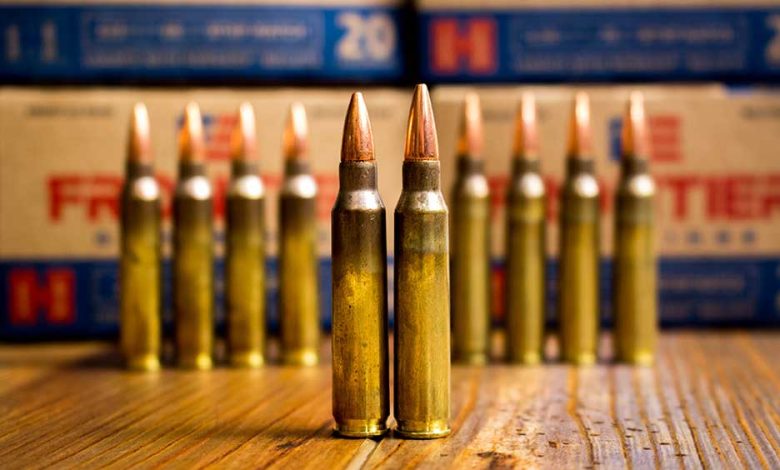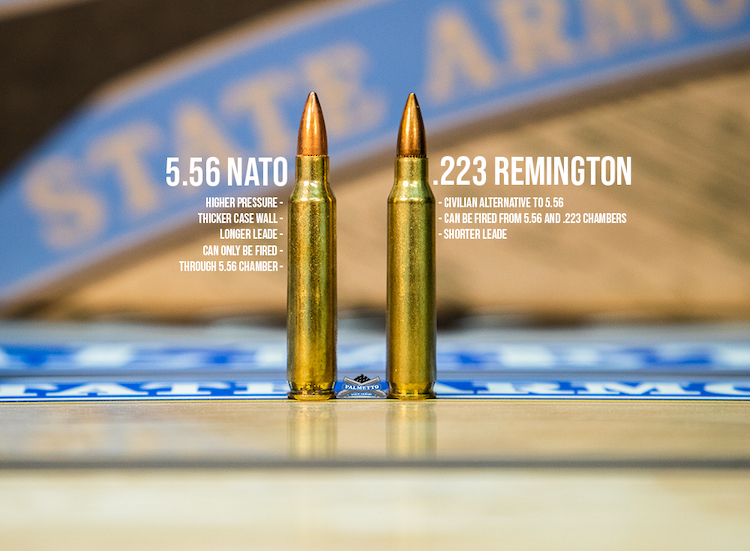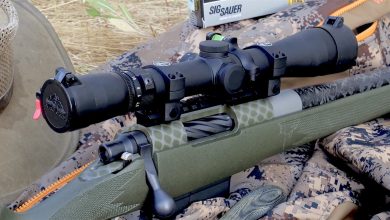Difference Between 223 Remington and 556 NATO?

At first glance, there is hardly any difference between 223 and 556. Both are cartridges for the AR-15 rifle and are incredibly popular in their own right. Since the two are considerably similar, first-time buyers may get confused about which one to buy.
Difference Between 223 and 556
Although the differences between the two cartridges are nominal, they do affect the performance, capability, and safety of the rounds. We will have a look at how the two differ in some of the key areas that most buyers will consider when selecting one of the two.
Ballistics

The first difference between 223 and 556 is in the pressure and resulting velocity. The 5.56 ammo has a higher pressure load of 58,000 psi as compared to the .223’s 55,000 psi. This means that the 5.56 NATO can be shot with a greater velocity, which reduces the drop and drift over long distances. Additionally, the 5.56 has a longer throat, which results in slightly more gunpowder within the cartridge.
This does not necessarily mean that the 5.56 is better than the .223 Remington. On the spec sheet, the .223 Remington has a shorter throat and a more accurate chamber. This reduces the jump when the bullet transfers from the case to the barrel. This smoother transition allows the bullet the leave the barrel with more consistency.
The 5.56 NATO cartridge is stronger overall when compared to the .223, while the .223 is more consistent between rounds. However, at the shooting range, these differences in velocity or consistency hardly translate to a considerable difference in performance.
Chambers
Another difference between 223 and 556 is in their rifle chambers. Before we begin, though, it is essential to understand how pressure builds up inside rifle chambers. It builds up as the bullet is pushed from the mouth of the case and makes contact with the barrel rifling. The shorter the distance covered, the higher the pressure buildup.
Rifles made for the .223 have smaller chambers. This means that when 5.56 ammo is fired from a .223 rifle, the bullet contacts the barrel rifling sooner because of the 5.56’s longer throat. As a result, the pressure builds up sooner, and the rifle may fire at a pressure of 65,000 psi as opposed to the .223’s normal pressure of 55,000 psi. This pressure increase of 10,000 psi can prove to be dangerous.
When the situation is reversed, the .223 is fired with less pressure when loaded into a rifle made for the 5.56 because of its shorter throat. This will reduce the accuracy and performance. However, the combination does work, and the average user might not even feel the difference in performance.
Difference Between 223 Remington and 556 Nato Conclusion
On paper, the .223 and the 5.56 may have a slight edge over each other in terms of power and consistency, but they are very similar in performance. The rounds users go for will depend on personal preference and availability. Overall, a rifle with a 5.56 chamber could prove to be a better choice only because it can accept both rounds without any dangerous side effects.




